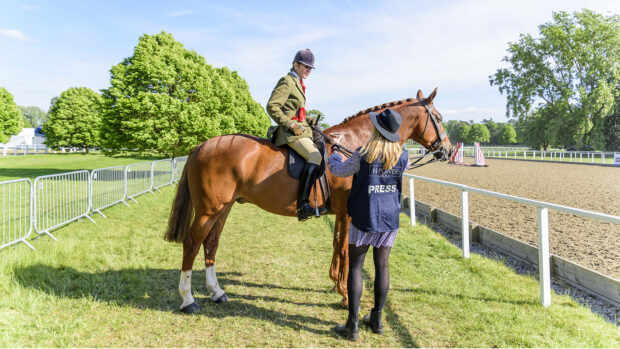David Evans always dreamed of getting to the Olympics but, while he has realised he won’t be there as a rider, he has found another way. David has created some of the biggest and best cross-country fences at home and abroad and has been booked to build the track for the 2008 Olympics.
He rode and competed in his childhood and continued to event after joining the Royal Horse Artillery.
“My ambition was always to go to the Olympics. When the realisation finally dawned that I was never going to be good enough, I decided to get to the Games another way.”
At this point, David started building the cross-country course at Holker Hall, an event run by his father. He had no training, but learnt as he went along and now builds a number of private schooling tracks as well as portable fences.
After 20 years of working for designers such as Mike Etherington-Smith — with whom he collaborates at Blenheim, Chatsworth and Bicton, and Mark Phillips (Gatcombe) — David’s next project is to build at Hong Kong alongside Mike.
“As with most big events, it will turn into a full-time job six to eight weeks before the event.”
It is very much about teamwork and David works alongside his business partner, Richard Taylor, and three other employees.
“All the guys I work with are best buddies and that really helps — you do have to get on with each other in this business,” he says.
Although horse trials is a seasonal sport, the building process generates a year-round role for David and his team.
“We already know what we’re doing for spring events such as Chatsworth and Bicton — Mike [Etherington-Smith] has decided on his designs and I am sourcing the materials,” he explains. “Work on the later events — Gatcombe and Blenheim — will start by April.”
David is passionate about sourcing the best materials, but keeping them fresh can be difficult. This means work cannot always start too far in advance, leading to tight deadlines.
Winters may be quieter, but David has a sideline producing carvings of animals and people, many of which have become his trademark, adorning cross-country fences.
He is also highly knowledgeable about the going and is clerk of the course at Blenheim, undertaking all the ground preparation, stringing and flagging.
Generally, the weather is the biggest problem. “I’ve never missed a deadline, but
the weather can take you right up to the limit. It can be frustrating not being able to get on with your job,” he explains.
“We go to great lengths not to mess up the ground — sometimes we have to lift the materials in, rather than drive them, in order to save the ground.”
Life for a course-builder is varied, and different venues and challenges keep David on his toes.
“I am always learning and always looking for new ideas to improve my courses. For me, the difference is finishing off the fences to a higher standard than anyone else’s.”
His equestrian background also helps when it comes to building the fences, as he explains: “It definitely helps if you visualise the fences and see them taking shape.”
David’s advice to new recruits to the profession is: “Work for someone and learn from them. You just need someone to give you a bit of leeway, that’s the best way to start. I am lucky with the estates I now work on, and the amount of travel is definitely a perk.”
For anyone wanting an outdoor equestrian-related job, course-building may be the answer, as long as you heed David’s final words: “You have to be committed — it really is a way of life — and, like many other jobs with horses, you’re never going to make a fortune from it.”



